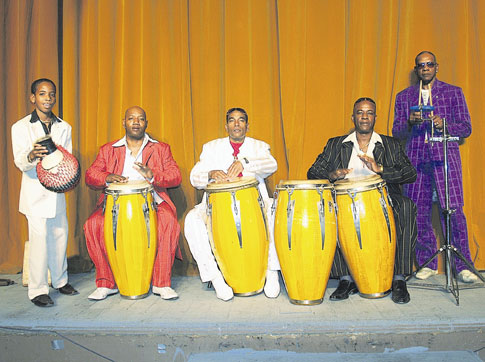La rumba, the quintessential Cuban party, is back in New York as if it never stopped.
Lovers of Afro-Cuban rumba are sure to turn out to see one of the genre’s consummate practitioners, Los Muñequitos de Matanzas, playing here for the first time in nearly a decade.
The pioneering rumba ensemble will perform Thursday, Friday and Saturday at Symphony Space on the upper West Side as part of the ¡Sí Cuba! festival, which is presenting artists of Cuban origins in all genres in venues around the city through the end of June.
Los Muñequitos, whose name translates into “the little dolls from Matanzas province,” have worked as a group for over six decades, with 16 musicians, singers and dancers across four generations.
The troupe is widely recognized as one of the strongest and most traditional practitioners of rumba, a musical and dance style developed by the descendants of African slaves and closely connected to Afro-Cuban religious practices, especially those in the Lucumí tradition.
“For me, one of the main strengths of Los Muñequitos is that we are a cabildo, an extended family,” says Diosdado Ramos, the group’s director, referring to the religious brotherhoods that flourished in 19th-century Cuba among descendents of slaves.
Luis Cancino, one of the percussionists and dancers in the group and also its musical director, believes the group’s development in a northeastern province about 45 miles east of Havana, far from the influence of capital-city fashions, has helped it keep both a consistent identity and a high quality through the years.
“We work without losing the fundamental model,” says Cancino, 39, from a tour stop in Albuquerque, N.M. “We are from the province, not the capital, but our dedication comes from us being at the cradle of rumba.”
Sticking to religious and secular rumba traditions does not mean that the form does not change or evolve. Ramos, who came to the group as its first dancer when it was founded in 1952, said this tour includes material never seen before by U.S. audiences.
The girl in the yellow dress performs the rumba, a musical and dance style developed by the descendants of African slaves. (Miguel Madonado)
For example, an exchange in 1998 with tap dancer Max Pollack yielded a number that Ramos labels as “rumba-tap” performed by two of Los Muñequitos’ dancers.
“Even in our evolution you can see that it is Los Muñequitos, without moving away from the model and the tone,” Ramos says. “There are innovations, but we’re not going to insert a reggaetón.”
BY Carolina Gonzalez
SPECIAL TO THE DAILY NEWS




